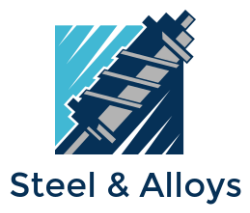Hot Work Tool Steel / Hot Die Steels
**Introduction to Hot Work Tool Steel:**
Hot Work Tool Steel, also known as Hot Die Steels, are high-temperature-resistant materials specifically designed to withstand thermal and mechanical stresses at elevated temperatures. These steels are widely used in the manufacturing industry for applications such as die casting, forging, extrusion, and other hot forming processes.
**Common Grades of Hot Work Tool Steel:**
1. **H-11:** H-11 is a versatile hot work tool steel known for its excellent resistance to thermal fatigue and high-temperature strength. It is commonly used in die-casting dies, forging dies, and extrusion dies.
2. **H-13:** H-13 is one of the most widely used hot work tool steels due to its high toughness, good thermal conductivity, and wear resistance. It is suitable for a wide range of applications, including hot forging dies, die-casting dies, and hot extrusion dies.
3. **H-20:** H-20 is a chromium-molybdenum hot work tool steel with good high-temperature strength and excellent toughness. It is primarily used in hot forging dies and pressure casting dies.
4. **H-21:** H-21 is a tungsten-chromium hot work tool steel with high resistance to thermal fatigue. It finds applications in hot forging and extrusion dies, as well as in die-casting dies for non-ferrous materials.
**Different Shapes and Sections:**
Hot Work Tool Steel is available in various shapes and sections to cater to different industrial requirements:
1. **Rounds:** Round sections are commonly used for producing components and tools that require even distribution of stresses.
2. **Squares:** Square sections are suitable for applications that demand uniform load distribution and stability.
3. **Flats:** Flat sections are utilized for creating parts and tools that need a broad surface area for machining or wear resistance.
**Forms and Size Range:**
Hot Work Tool Steel is available in different forms, each offering unique advantages for specific applications:
1. **Rolled:** Rolled steel undergoes a hot rolling process, which gives it improved mechanical properties and a more refined grain structure. The size range for rolled sections typically varies from small to medium diameters or thicknesses.
2. **Forged:** Forged steel is produced through a controlled heating and shaping process, providing superior strength and improved microstructure. Forged sections are available in a wide size range, suitable for heavy-duty applications.
3. **Bright:** Bright steel is produced by cold drawing hot work tool steel, resulting in a smooth and polished surface finish. The size range for bright sections is generally smaller and suitable for precision components.
**Production Routes and Steel Conditions:**
The production routes and steel conditions play a significant role in the final properties of Hot Work Tool Steel:
1. **Non-Vacuum Degassed Route:** Steels produced using the non-vacuum degassed route are more cost-effective and are suitable for applications where extreme cleanliness is not a critical factor.
2. **Vacuum Degassed Route:** The vacuum degassed route results in steels with a higher level of cleanliness and reduced non-metallic inclusions. This makes them ideal for applications that require superior toughness and fatigue resistance.
**Offered in Machinable Conditions:**
Hot Work Tool Steel is offered in various machinable conditions to meet the specific needs of different applications:
1. **As Rolled:** As rolled steel is supplied without any further heat treatment. It is suitable for applications that do not require specific mechanical properties and can be further heat treated as needed.
2. **Annealed:** Annealed steel is heated and slowly cooled to remove internal stresses and improve machinability. It is ideal for parts that require extensive machining or shaping.
3. **Normalized:** Normalized steel is heated to a specific temperature and then air-cooled to achieve a uniform structure. It offers improved mechanical properties and machinability.
4. **Spheroidize Annealed:** Spheroidize annealed steel is heated and slowly cooled to form spherical carbides, which improve machinability and reduce hardness. It is used for parts requiring extensive cold working.
In conclusion, Hot Work Tool Steel is a crucial component in modern manufacturing processes, and its availability in different grades, shapes, sections, forms, production routes, and machinable conditions ensures it can be tailored to meet diverse industrial demands. Whether it's die casting, forging, extrusion, or any hot forming application, Hot Work Tool Steel continues to be a reliable choice for high-temperature operations.
